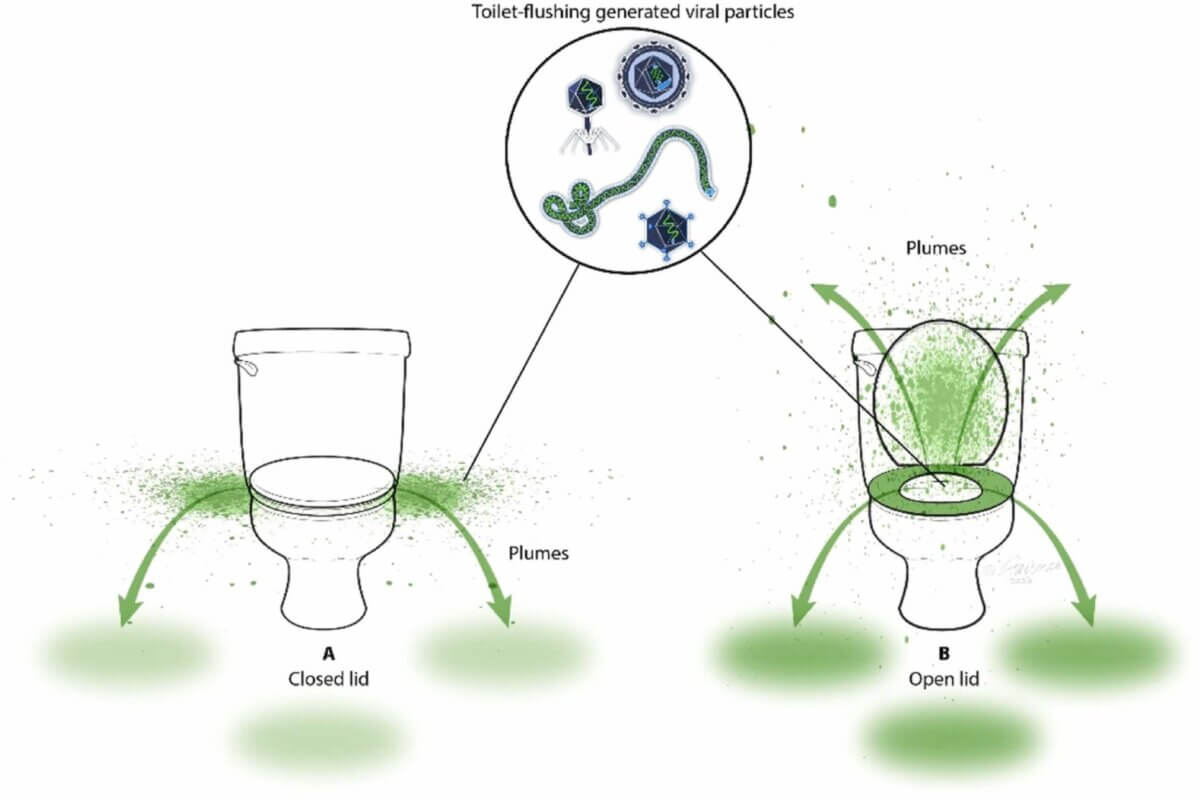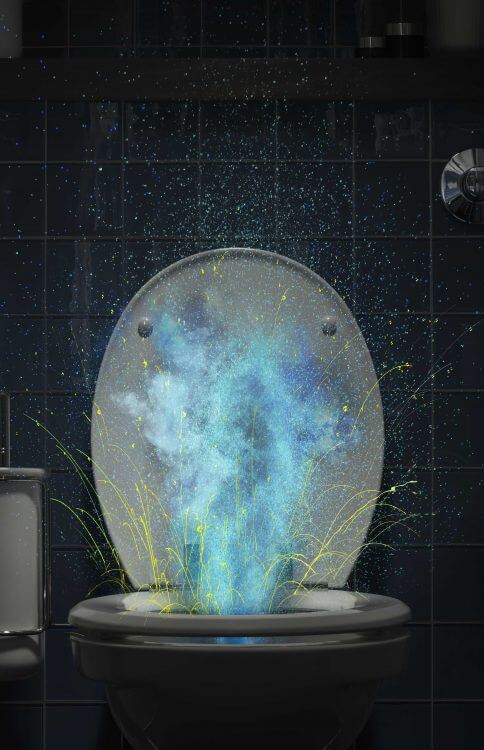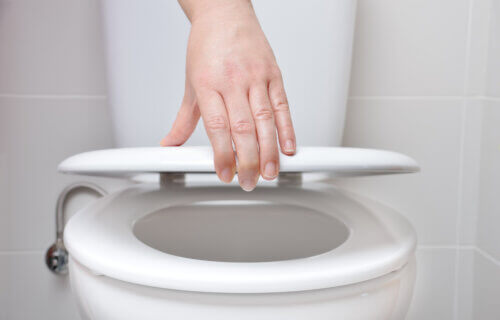Alarming new study reveals that viruses still shoot out onto nearby surfaces after flushing, even with lid down
The simple act of flushing a toilet is something we rarely give a second thought to. Yet, this mundane action is at the heart of a groundbreaking study that could change our understanding of bathroom hygiene. The research, published in the American Journal of Infection Control, may have you thinking twice about leaving a public restroom without washing your hands thoroughly.
Our journey begins with a simple question: “Does closing the toilet lid actually prevent the spread of germs?” To answer this, researchers from the University of Arizona and research firm Reckitt Benckiser conducted a study that challenges long-held assumptions about restroom hygiene.
🔑 Key Findings
- Toilet Lid Position Doesn’t Matter: Surprisingly, whether the toilet lid was up or down didn’t make a significant difference in viral contamination of surfaces.
- Virus Spreads Regardless: After flushing, viruses were found on various surfaces – from the toilet seat to the floor.
- Cleaning Matters: When toilets were cleaned with a disinfectant, there was a notable reduction in viruses, especially in the toilet bowl water.
Researchers introduced a harmless virus, called bacteriophage MS2, into the toilet bowls of both household and public restrooms. Why MS2? Because it’s safe and behaves like many disease-causing viruses. They then flushed these toilets with both the lid up and down. By collecting samples from various surfaces like the seat, handle, floor, and even the air, they tracked where and how far the virus spread.
The results were eye-opening:
- Lid Position Inconsequential: Contrary to popular belief, closing the toilet lid did little to contain the viral spread.
- Widespread Contamination: Post-flush, the virus was detected on numerous surfaces within the restroom, indicating a more extensive spread than previously thought.
- The Power of Disinfectants: Regular cleaning with disinfectants significantly reduced the presence of the virus, particularly in the toilet bowl water.
To understand why the lid position didn’t matter, we need to explore the dynamics of a flushing toilet. When flushed, toilets create a phenomenon known as “toilet plume,” a spray of droplets that can launch microbes into the air. The study found that this plume could spread contaminants regardless of the lid’s position.

This revelation has profound implications, especially in healthcare settings where infection control is critical. It suggests that our strategies for maintaining restroom hygiene need reevaluation. The emphasis should shift from merely closing lids to ensuring regular and effective cleaning with disinfectants.
So, what does this mean for the average person or a facility manager? It’s about prioritizing cleaning routines and using the right products. For instance, in a hospital, this could mean more frequent disinfection of restrooms and perhaps rethinking the design of toilets to minimize plume spread.

Moreover, awareness is crucial. Public health campaigns could benefit from incorporating these findings and educating people on effective hygiene practices beyond just the common “close the lid” advice. The study could also spur innovation in toilet design. Manufacturers might develop toilets that minimize plume effect or incorporate antimicrobial surfaces.
The good news is, the study found that cleaning with a disinfectant and brush reduced viral contamination on the toilet by more than 99.99% and on the brush by 97.64%. Experts say this is important if someone in the house is sick. This is especially the case for stomach bugs: using a disinfectant during cleaning or prior to flushing may help reduce the spread of infection to others in the household.
“With results showing that closing toilet lids has no meaningful impact on preventing the spread of viral particles, our study highlights the importance of regular disinfection of toilets to reduce contamination and prevent the spread of viruses,” says senior author Charles P. Gerba, PhD, professor of virology at the University of Arizona.
As we flush away old beliefs, this study opens the door to a new understanding of hygiene in one of our most private spaces. It’s a reminder that science continually evolves, challenging and refining our knowledge. The next time you flush, remember it’s not just about the lid – it’s a complex interplay of hygiene practices that keep us safe.

This indicates a faulty design in toilets. I am sure this problem can be rapidly eliminated. Meanwhile, I strongly suggest keeping the lid closed unless you enjoy fetching your dropped toothbrush or other hygiene items from the bowel.